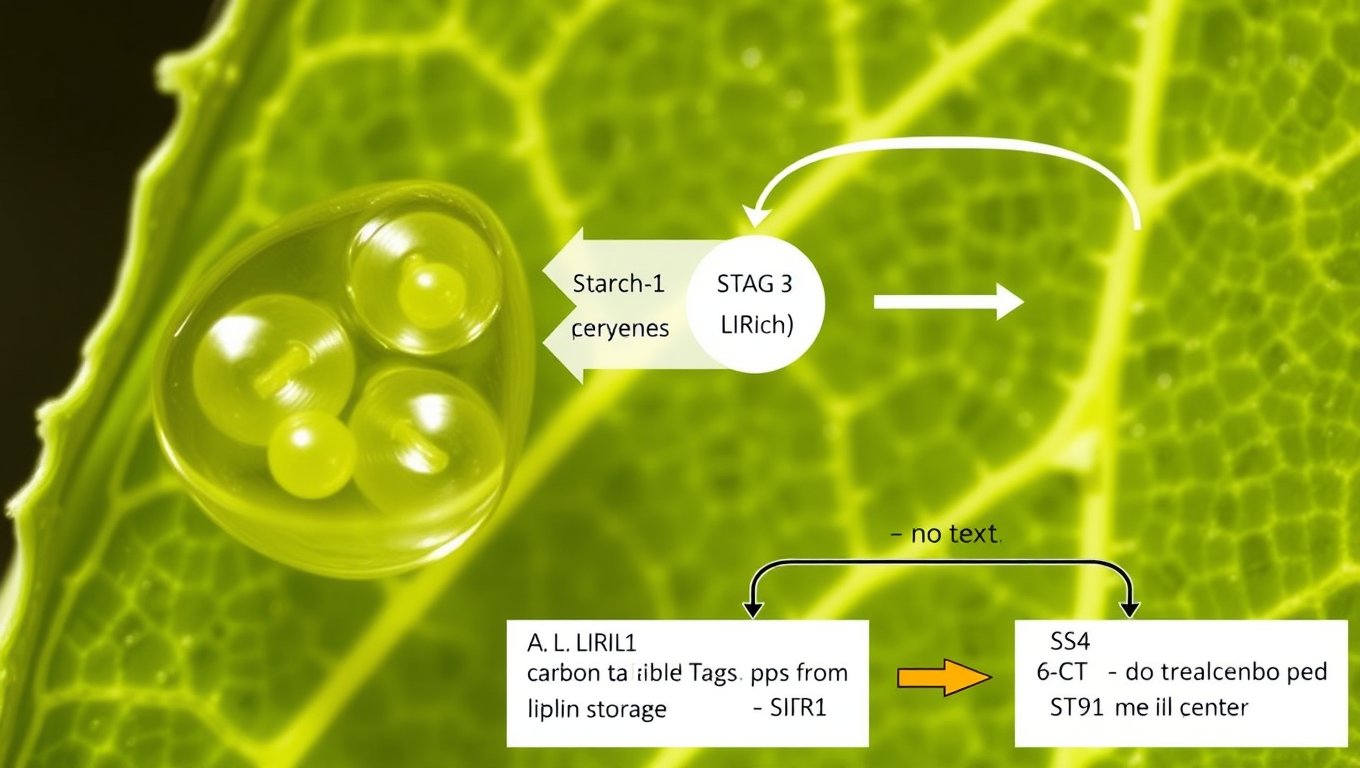While we try to keep things accurate, this content is part of an ongoing experiment and may not always be reliable.
Please double-check important details — we’re not responsible for how the information is used.
Air Quality
Unveiling the Secret to Carbon Balance in Plants: The LIRI1 Gene Reveals its Role in Regulating Starch-Lipid Trade-Off
Starch and oils are known as storehouses of carbon in plants. However, the way in which carbon resources are allocated during metabolism in plants remained unknown. Now, however, using a forward genetics approach, researchers have identified that a gene named LIRI1 regulates this process, significantly increasing oil storage in leaves while reducing starch levels. Their findings provide insights into carbon allocation mechanisms, offering the potential for the development of renewable biofuel resources or low-starch foods.

Air Quality
Greenland’s Glacial Runoff Fuels Explosive Growth in Ocean Life
NASA-backed simulations reveal that meltwater from Greenland’s Jakobshavn Glacier lifts deep-ocean nutrients to the surface, sparking large summer blooms of phytoplankton that feed the Arctic food web.
Air Quality
Breakthrough in Bioplastics: Scientists Unveil a Stronger, More Sustainable Alternative to Petroplastics
Plastic pollution is a mounting global issue, but scientists at Washington University in St. Louis have taken a bold step forward by creating a new bioplastic inspired by the structure of leaves. Their innovation, LEAFF, enhances strength, functionality, and biodegradability by utilizing cellulose nanofibers, outperforming even traditional plastics. It degrades at room temperature, can be printed on, and resists air and water, offering a game-changing solution for sustainable packaging.
Air Quality
“The Hidden Climate Battle Between Forests and the Ocean: Trends, Drivers, and Implications for Planetary Health”
Between 2003 and 2021, Earth saw a net boost in photosynthesis, mainly thanks to land plants thriving in warming, wetter conditions—especially in temperate and high-latitude regions. Meanwhile, ocean algae struggled in increasingly stratified and nutrient-poor tropical waters. Scientists tracked this global energy shift using satellite data, revealing that land ecosystems not only added more biomass but also helped stabilize climate by capturing more carbon.
-

 Detectors7 months ago
Detectors7 months agoA New Horizon for Vision: How Gold Nanoparticles May Restore People’s Sight
-

 Earth & Climate9 months ago
Earth & Climate9 months agoRetiring Abroad Can Be Lonely Business
-

 Cancer8 months ago
Cancer8 months agoRevolutionizing Quantum Communication: Direct Connections Between Multiple Processors
-

 Albert Einstein9 months ago
Albert Einstein9 months agoHarnessing Water Waves: A Breakthrough in Controlling Floating Objects
-

 Earth & Climate8 months ago
Earth & Climate8 months agoHousehold Electricity Three Times More Expensive Than Upcoming ‘Eco-Friendly’ Aviation E-Fuels, Study Reveals
-

 Diseases and Conditions9 months ago
Diseases and Conditions9 months agoReducing Falls Among Elderly Women with Polypharmacy through Exercise Intervention
-

 Chemistry8 months ago
Chemistry8 months ago“Unveiling Hidden Patterns: A New Twist on Interference Phenomena”
-

 Agriculture and Food8 months ago
Agriculture and Food8 months ago“A Sustainable Solution: Researchers Create Hybrid Cheese with 25% Pea Protein”





























